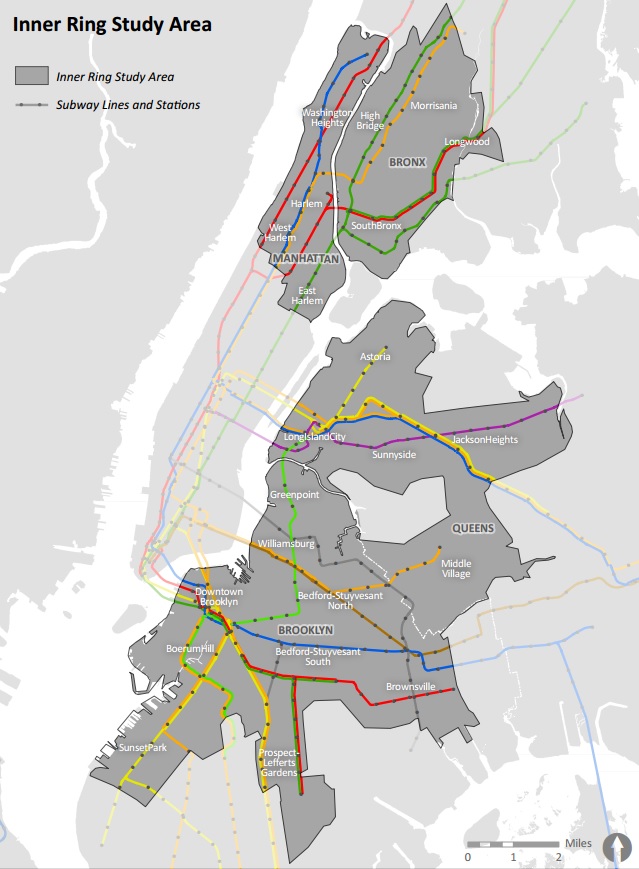
The New York City Department of City Planning’s (DCP) recently-released Inner Ring Residential Parking Study “examines key issues related to determining the appropriate amount of required off-street parking for various neighborhoods.” Just 35 percent of households own a vehicle in the Inner Ring, which is defined as “a collection of transit-rich neighborhoods in Upper Manhattan, the Bronx, Western Queens and Brooklyn,” compared to 46 percent in New York City as a whole and 91 percent in the United States.
The study reiterates the City’s sustainability achievements and goals for the future, giving the impression that the study’s intent is to further those goals. But the recitation is a red herring, distracting from the clear purpose of study: to maintain parking minimums.
A careful reader could identify on the very first page that DCP was masking its intention for this study where it quotes a statement from Donald Shoup‘s “The High Cost of Free Parking”: “There is no intrinsically ‘correct’ amount of parking that should be required for a new development.”
But the quote misrepresents Shoup’s position. The reason there is no “correct” amount of required parking, according to Shoup, is because there shouldn’t be any. Shoup himself said, “Three basic parking reforms I recommend in “The High Cost of Free Parking” [are]:
- remove off-street parking requirements,
- charge market prices for on-street parking to achieve about an 85-percent occupancy rate for curb spaces, and
- return the resulting revenue to pay for public improvements in the metered neighborhoods.”
Instead, DCP recommends the opposite by continuing to require off-street parking and providing free on-street parking. Combining that free on-street parking with required off-street parking creates massive distortions in the market and inhibits the ability to meet the sustainability goals DCP invokes:
Although market prices can allocate parking spaces fairly and efficiently, cities now require off-street parking everywhere—imposing enormous costs on the economy and the environment. Cities can and should regulate off-street parking to improve its quality, but they should deregulate its quantity and instead charge market prices for curb parking. If cities deregulate off-street parking and charge the right price for curb parking, market forces will improve transportation, land use, the environment, and urban life. You will not pay for my parking, and I will not pay for yours. Instead of planning without prices, we can let prices do the planning.
If DCP really wants to make the city more sustainable while still providing parking for those who are able and willing to pay for that parking, it should pursue policy reforms that accurately price the cost of parking and dedicate those revenues to better transit service and safer walking and biking environments.

The report is flawed. They use the 2000 Census and 2005-2009 ACS numbers–all stale. Also, they only count NYS-registered vehicles on site in their analysis but admit that the number of vehicles present but not registered at the site is substantial.
Why did they publish at all?
[…] infrastructure beyond simply maintaining a state of good repair. Perhaps the City should consider eliminating parking minimums, creating a residential on-street parking program, and tolling the East River Bridges – […]
[…] York City taxpayers — In a city suffering from unregulated parking creating an incentive for car ownership, taxpayers are footing the bill to provide free parking […]